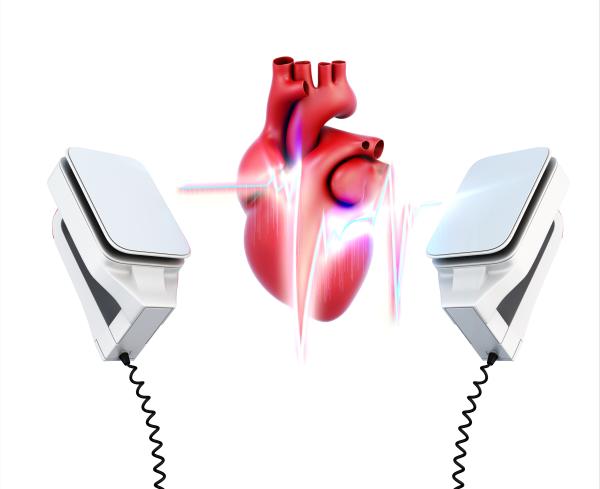Early and swift intervention with an automated external defibrillator (AED) amidst sudden out-of-hospital cardiac arrest (OHCA) during bystander cardiopulmonary resuscitation (CPR) saves lives—in fact, doubles the likelihood of survival. (1) We know this. There is data to support this. So, why is their usage so low?
The problems: Cost, Availability and High Variability of Place and Time of OHCA occurrence.
A team of University of Toronto researchers critical of prior efforts to guide policy of public AED placement around too broadly defined location categories without consideration of accessibility decided to explore a way to rank specific businesses and municipal locales to maximize OHCA coverage with AEDs. In their work, they prioritized spatiotemporal OHCA risk factors in the closest proximity to franchises in Toronto. (2)
After all, it is wonderful for a commercial space to provide an AED. But, if your cardiac arrest occurs at midnight outside the scope of the store’s hours of operation, then it is as if there never even was an AED. Given the fact that survival is less than 10% with OHCA amounting to roughly 400,000 deaths each year in North America, the issue is an important public health concern. (3)
The Canadian team analyzed findings from the 2654 spontaneous public OHCAs occurring in Toronto, ON, Canada from January 2007 to December 2015. By identifying 41 unique businesses and municipal location types with greater than or equal to 20 locations, they “determined the number of OHCAs that occurred within 100m of each location when it was open (spatiotemporal coverage) for Toronto overall and downtown. The businesses were then ranked by spatiotemporal OHCA coverage.” (4)
Starbucks was number one in the downtown area covering 110 OHCAs. 8 of the top 10 spots in overall and downtown Toronto consisted of coffee shops and ATMs from their 5 major banks. These demonstrated the greatest OHCA coverage and such novel rankings remained stable with the passage of time. The scientists suggest partnerships with such companies could be an avenue for policy decisions. Recognizing these rankings are specific to Toronto and would require recalculation per each geographical selection, they urge the rankings could guide the best private-public PAD (public-access defibrillation) partnerships for policy makers and funders to focus their efforts.
They underscore the benefits of outdoor ATMs as a desirable AED placement given it could reduce barriers to use. ATMs provide cameras, have weather protection so could potentially maintain the AED cabinet and are universally recognized by the public. The scientists believe the same about coffee shops and consider them of equivalent value when it comes to both businesses presence in the future which is meaningful to AED placement in the present.
In an ideal world, AEDs would be accessible 24 hours a day for 7 days a week. Any measures that include that calculation are certainly worthwhile. The University of Toronto investigators hypothesize these types of AEDs would be more cost-effective than ones with low coverage efficiency.
According to their published paper in the journal Circulation, these private-public PAD partnerships could be enhanced by the financial contribution of the companies, brand-associated public awareness could increase likelihood of AED use by bystander, specialty employee training acting as first responders along with integration with emergency services. The limitations in their research includes their lack of use of holiday schedules or seasonal fluctuations for hours of operation calculations, the need for unique analysis per respective city or region beyond Toronto, and their use of a cutoff of businesses that could have excluded optimal placements.
It would be hard to find someone not in support of increasing accessibility of AEDs, but the reality of this given their several thousand dollar price tag and need for continued maintenance deems that eventuality quite unrealistic. Therefore, strategic placement has guided most PAD programs and policy. How to do so in the most effective manner is not an exact science given the often random strike of the OHCA and the lack of uniformity of survival.
Until a discovery is made of an inexpensive portable defibrillator that could fit in someone’s purse or pocket, AEDs will only help those fortunate enough to experience an OHCA at the right place and time. As an accompanying editorial in Circulation suggests, “Whether systematic deployment of AEDs at high-ranking businesses will actually result in increased rates of bystander AED usage and subsequent survival needs to be tested in prospective studies…For spatiotemporal AED distribution in public commercial sites, as suggested by Sun and colleagues, the community might purchase the device and accept liability while the business provides funding for the AED purchase, maintenance, and marketing costs and, in return, receives the benefit of a charitable donation, publicity and goodwill.” (5)
Whether goodwill is currently enough for companies to invest in this manner —in their employees and the community at large— is unknown. As is the reality of whether such an action would prompt an increase in actual customers. What is certain is that every second counts in a cardiac arrest and the more you know how to help in such a situation, the better the possibility of a desirable outcome. To learn more about the importance of CPR and bystander AED use, read Want a Nation of Super Heroes? Early CPR Makes Every Second Count!
Though these rankings aren’t the definitive answer to policy regarding AED public placement, they do start a valuable conversation that could serve to save lives.
Sources:
(1) (5) Michael E. Field, Richard L. Page. The Right Place at the Right Time: Optimizing Automated External Defibrillator Placement in the Community. Circulation. 2017;135:1120-1122.
(2) (3) (4) Christopher L.F. Sun, Steven C. Brooks, Laurie J. Morrison, Timothy C.Y. Chan et al. Ranking Businesses and Municipal Locations by Spatiotemporal Cardiac Arrest Risk to Guide Public Defibrillator Placement. Circulation. 2017;135:1104-1119.
Note(s):
Those with previously diagnosed heart conditions that predispose them to sudden death sometimes have a defibrillator internally implanted.




